WELCOME TO MY WEBSITE. IT IS FREE FOR ALL WINE-LOVERS, AND SENSORIALLY INQUISITIVE OTHERS, TO PERUSE AND—HOPEFULLY—FIND ENJOYABLE AND STIMULATING.
My work is subject to copyright, however, and the redistribution—sharing—of any reviews and stories published here is withheld without permission. You can find more detail about this sort of stuff—and about I.P. licences and republishing rights—here. But do feel free to read on, thanks for your consideration, and please enjoy your wines of choice in moderation. Tim White
Wine of Note 25/09-03
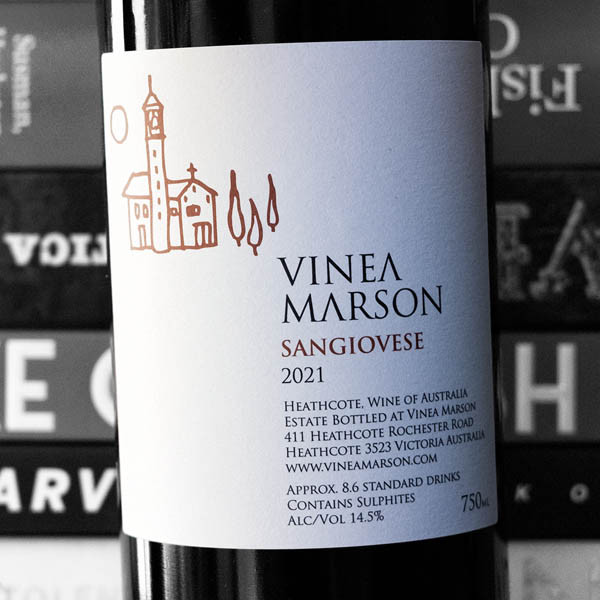
Vinea Marson Sangiovese 2021 (Heathcote, Vic)
Dusty red brick, dried thyme. A black cherry blood plum thing. Cherry pit as well as soused cherry flesh. Plus something a bit more puckered which is dark, autumn figgy. Has distinctive—serious—Italianateness to it. In a varietal way I mean. And so too in the dusty tannin and cane berry pippy acid shape in the mouth. Lots of things to suck on as it travels briskly across the tongue: brandied black cherry, cut by bitter sweetness, and a complex smoked duck character, but not wood—oak—perceptibly. It’s Maillard reaction-like. Heathcote gunpowder among sharp-sweetness. A crispness, and restraint despite the fruit intensity, which suggests latent complexity. Although there’s already a good bit going on. 94(95)/100 (e) - 9/10 (h) - 😋😋 - $46 cellar direct.
This wine stimulates a recollection from my personal sensory library of a sublime Steve Manfredi dish from back in the day at The Restaurant, on Harris Street, Ultimo. It's of oven-roasted duck, crisped on the char grill, then set on a bed of arugula—rocket—and finished with drizzles of balsamic, and the juices of the rested bird. This I enjoyed a few times with Fonterutoli Chianti or something else from Tuscany of a similarly distinguished disposition. There’s a fine recipe for duck prepared similarly with braised radicchio hearts in Manfredi’s delightful cookbook, Fresh from Italy written with John Newton (Hodder & Stoughton, 1993).
Back then Aussie Sangiovese, with a few exceptions—consistently and notably Coriole—was pretty ordinary and a lot can still be, primarily because the predominant clone planted at the time was H6V9. High-cropping and low-flavoured best generally describes it. It had arrived into Australia via UC Davis in the late sixties and one does not need to delve too deeply to learn what the general standard of wine made from the cultivar in its was homeland was like back then.
But a significant reappraisal of sangiovese’s true worth was underway in Tuscany in the late eighties. Extensive field research for the Chianti Classico 2000 Project identified numerous superior clones of sangiovese and other traditional black grape varieties such as canaiolo and colorino. We have a wealth of this high quality material in Australia now, thanks largely—and this should be writ extremely large—to the Chalmers family and the late Dr. Rod Bonfiglioli. You’ll find excellent detail here about the MAT and VCR Sangionvese clones represented by Chalmers in Australia. Along with so much more if cultivars of the Italian kind are your thing.
So when I learned at the reveal of a little line-up of sangiovese, nebbiolo, and aglianico that this beautiful Vinea Marson brace were the two top wines my text to Mario (Marson) went (in part): 'Can you let me know which clones you have planted? And what vine age is etc? Please don’t tell me you have any H6V9. Otherwise I’ll have to undertake serious palate re-appraisal and soul searching.’
He replied with a big no—mercifully—to H6V9 and with a long list of the clones he commenced planting in 2000 and 2001. Two from Frescobaldi first-up, which came in via the Yalumba Nursery—like Chalmers, another invaluable fine vine repository—and were then followed by two clones he and the late Trevor Mast* imported with the assistance of Paolo de Marchi** of Isole e Olena. A further four clones were also sourced from De Marchi at considerable expense (quarantine costs and all). Marson also planted some of the old, so-called Mudgee clone which was sourced by Carlo Corino at Montrose back in the eighties (original origin unknown). Additionally there is one clone of unknown origin and—most recently planted—three of Chalmers MAT clones. ’Thirteen clones of Jove’s blood by my count,’ according to Marson. Sangiovese also represents one third of the estate’s seven hectares planted across Marson’s distinct ‘Sotto’ and ‘Sopra’ vineyards.
* Trevor Mast was so way ahead of the times in his enthusiasm and understanding of spicier—rotundone peppery—oncetime, so-called ‘cool climate’ styles of Australian shiraz, and the Mount Langi Ghiran wines he created exemplified it. There are some considered and touching words about him on Mount Langi’s website here.
** Your correspondent is fortunate to have enjoyed a number of conversations with de Marchi both in Australia and at the estate in Barberino Val d’Elsa. A more dedicated individual to the purity of Chianti Classico and sangiovese you will never meet. The family sold the property a few years ago, however, to dedicate themselves to the wines of Proprietà Sperino in Lessona—their home town—in northern Piemonte.

Vinea Marson Sangiovese 2020 (Heathcote, Vic)
Rich smelling this, a dark deep, prune tart number. But there’s also berry brightness adding sparkle. Sweet tar and loganberry pippiness in an old rusty, iron bucket. An emulsion of concentration, and lustre. Seriously oomphy on the palate also, but still charged with mouthwatering briskness and tannin dryness. The tannins do get wetter textured though with air, more shiny, carbon paper tasting. Fine tannin—suspended, spun—among caneberry pip coulis. Fascinating texture, but also fabulous fruit intensity, which lingers long into the final third. Or should I say, last quarter phase-wise? 95/100 (e) - 9/10 (h) - 😋😋 - $42 cellar direct. Have a bottle set aside for the next Blood Moon.
Accompanying the set of Vinea Marson tasting samples was a postcard carrying an autochrome-looking portrait of a seven year old Mario with family on their farm in Friuli. He’s pictured with his nonno Geremia, mother Grazia, after whom the Marsons’ idiosyncratic Friuli-inspired white blend is named; and his father, Giuseppe whose name is set one day to adorn a Heathcote-Porepunkah grappa distillate. (Can’t wait 😄).
The vines in the picture—Merlot, Cabernet Sauvignon and Tocai Friulano—were trellised high, to provide for the grass grown as fodder underneath. As Mario told me, ‘The grass was used as hay for stabled cows, hand milked cows for family milk and the local cheese co-op. Animal waste matter was used to cultivate crops and vineyard.’
On the reverse of the card Mario had written, ‘There are two vintages of Sangiovese as the 2020 was so small due to climatic conditions. The vintage was reduced that much we have not made a Shiraz Viognier.'
The 2020 vintage in Heathcote—you see—was most troublesome, affected by several extreme weather events. On November 26th 2019 the temperature reached 46º and winds of 60-80 km air-fried inflorescences causing extreme vine stress. That’s if there was any latent crop as severe October frosts—which extended across many South Eastern Australian wine regions—had already had an impact on the potential fruitfulness of many vines for the 2020 harvest. There was also an 80mm rain event in February that necessitated costly net removal for spraying.
Thankfully, the region was spared the calamitous effects of smoke taint brought about by the extreme bushfire season. This had awful consequences for producers in the King Valley and Beechworth to the north. And across southern New South Wales and beyond, of course.
Nonetheless, all the above dramatically reduced yields across Heathcote stressing winegrowers and vines. Some lovely wines were made though, despite the challenging conditions. This, of course, is a fine example—and one which has particularly surprised and delighted this taster.
Wine of Note 25/09-02
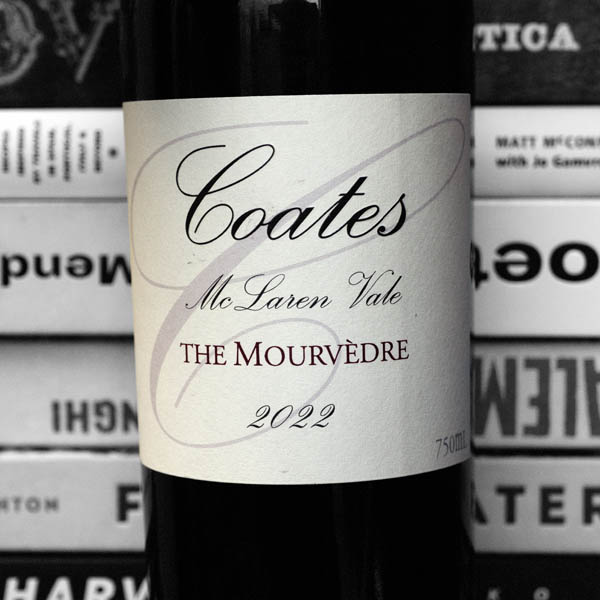
Coates The Mourvèdre 2022 (McLaren Vale, SA)
Gentle, woodsy bark spiciness to begin among dried sour cherries and mashed mulberries. Gets warm red brick and transitory sniffs of Muntok white pepper as it opens further. Such pure fruit expression here, with considered—complexing, complimentary—sourdough oak crustiness snuggled among it. Gentle, and oh so controlled on the palate as well, but with serious fruit intensity: sour cherry coffee, quinine, bitter chocolate, and coffee grounds. The tannin acid realtionship is like fine Turkish coffee grittiness which I don’t appreciate in coffee often but do in this. But the texture is yielding. Crisp mocha mouth-aromas. But curious the texture is yielding and easy on the tongue. Subtle mouth-aroma wafts of cold-smoked wagyu beef. How will this evolve I wonder? 94(95)/100 (e) - 9/10 (h) - 😋😋 - $35 cellar direct. Like most Coates wines, this is incredible value for money.
Somewhere in the middle of last year (2024) Luke Saturno pulled the cork—a Diam it turned out thankfully to be—on a wine that had been left at the Gilbert Street Hotel by the winemaker for he and me to taste. He poured it sight unseen to me and—well—it was a magical, transportative liquid. Flor yeasty, candied quince skin fruited, chestnut and macadamia nutty and creamy. It was obviously a Vin Jaune styled-wine and it reminded me of Crittenden’s Cris de Coeur Savagnin Sous Voile, but was even richer than it—or at least the last vintage I'd tasted (the '18). It was more stollen sweet dried fruit tasting though, with some obviously fancy integrated oak.
I say transportitive because tasting fine examples of sous voile styles of wine—table wines aged under a veil of active yeast flor—invariably takes me back to Claude’s in Woollahra (Sydney) when a 1961 Chateau Chalon that I’d brought along paired beyond magnificently with Tim Pak Poy’s ‘crisped marron’ creation on the set menu. Which was deep-fried marron tail in a fermented chick-pea flour, tempura-type batter. This was one of those once in a lifetime unforgettable—and unexpected—flavour thrilling experiences.
Not so long ago I was lucky enough to enjoy a similarly stimulating sensation at arhké in Norwood (Adelaide). Myself and a friend had made our delighted way through several gorgeous smaller courses and arrived at the lunch’s centrepiece: southern rock lobster, dressed with garlic brown butter, capers, and chives. Oliver Parish, who was attending to us most considerately, suggested a wine that might be quite delicious with the cray: Crittenden Cris de Coeur Sous Voile! And he was so right. It conjured another memorable crustacean and Savagnin organoleptic nigh-on orgasm.
As you may have surmised given the wines I’ve reviewed surrounding these words, the wine poured by Luke Saturno was from McLaren Vale-based wine producer, Coates Wines. Although the conduit cultivar to this elixir created under flor was not Savagnin, but Semillon: Coates Vin d’Or 2012 ($125 per 500ml bottle). Just twenty dozen bottled from the new medium-toast, Burgundy-coopered barrique that it rested in for over a decade. Unfortunately, we had neither marron nor cray to hand — but one day🤞.

Coates The Semillon Sauvignon Blanc 2021 (Fleurieu and Adelaide Hills, SA)
Limpid tangerine into ruby grapefruit. Transitory sage/rosemary, ahead of becoming more bergamot scented. There's a bracing ozone blast also, and a melty, glutamatey, sweet-sapid-suet pastry thing. It’s the peel and primal tang though that powers the nose, grabbing you into the glass, making the eyes water (If you’re lucky 😀). (And yes, maybe I’m getting a bit carried away here, but that’s what sublime wine can do to you.). Tangerine and ruby grapefruit jelly as it lands on the tongue, and then semi-dried rind builds, along with macadamia pastry chew. Fabulous texture here. Compressed small cell pear too and then a gentle break of nourishing bitey, aged cheddar sea saltiness to close. What a wine. 96/100 (e) - 10/10 (h) - 😋😋😋 - $30 cellar direct. What a bargain.
After we’d toasted Duane Coates vinicultural genius—like me Luke is a big fan of the above Semillon Sauvignon Blanc and numerous other Coates’ creations over the years—I commented that Duane doesn't make much of the fact that, as well having an oenology degree, he’s also an MW (Master of Wine). Which is an internationally revered wine professional qualification with an incredibly lowest pass rate. To have both on your CV is fairly rare.
‘Are you sure?’—or something similar—Luke responded, and for a moment I doubted myself. But I checked the Institute of Masters of Wine website ‘Find an MW’ search facility, which is where you’ll discover that there are just 418 individuals across 29 countries with the MW qualification. Coates is most certainly among them, passing the extremely rigorous, multi-discipline exam papers in 2020.
Yet you’ll find just one indication of the MW on the Coates’ website ‘About Us’ page. First-up there are wine philosophical and technical sections on the themes of ‘Natural Yeast Fermentation’, ‘Avoiding Fining Agents and Enzymes’, ‘Unfiltered?’, and ‘Tannin Additions’. Only in the concluding paragraph - ‘The Winemaker’ - does Coates eventually append the institute’s illustrious post-nominals. But there’s more…
Because in addition to the M.Oen. and M.W. characters of qualification that may follow Coates’ surname, he might also choose to add a B.Sc. (Batchelor of Science — majoring in biochemistry, along with microbiology and immunology), and an MBA (Master of Business Administration).
Which ain’t too bad for a boy from Elizabeth who didn’t graduate high school. Whose career officer advised that he might apply for work in the automotive sector, which was an important source of employment for this significantly blue collar municipality an hour north of Adelaide. This being a while before the Tony Abbott-led Liberal-National government’s wrecking crew were complicit in assisting with the trashing of the local car manufacturing industry about a decade ago. Scumbags. Along with it went dozens of light engineering businesses dependent on it.
Fortunately, and fortunately for us, Coates found work at Holyman’s (Transport). As a yard hand. He told me recently: ‘Holyman’s did lots of winery related work which led to my interest in wine. I was unloading cases of DRC (Domaine de la Romanée-Conti) and Bordeaux as a teenager. And loading Primo Estate and Torbreck (etc.) for the outbound journey.’ This set the direction of his oenological trajectory.
Coates' pedagogical arc also added another post-nominal string of letters to his bow along the way: a GMB. A top-level archery qualification meaning, Grand Master Bowman. Appropiately, each of the wines discussed above will provide you with a quiver of excitement.
Wine of Note 25/09-01
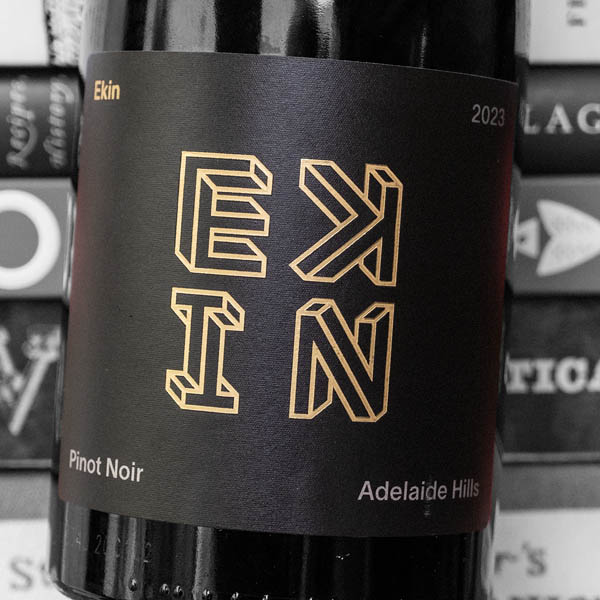
Ekin Wine Co. Pinot Noir 2023 (Adelaide Hills, SA)
'This smells like a pinot*.' Has sharp Williams pear and rosehip on the nose to begin. Floral almost) frangipanni like. Feijoa wild strawberry and something more ozone, oyster shell-smelling, although not reduced. Has gentle slink and ease in the mouth, with melty acidity and poached pear and pear skin granularity, which adds to the mouthfeel. Easy going, but with enough complexity to stimulate a little thought as well as pleasure. This is an honest, tasty little pinot. 91/100 (e) - 7/10 (h) - 👌👌👌 - $25 cellar direct. And most fairly priced.
*This is what I observed to the aforementioned Luke Saturno, proprietor of The Gilbert Street Hotel, when he splashed a glass of this and handed it over the bar. Tastes like pinot too I confirmed, and one that while gentle and easy on the tongue, had just the right amount of balancing tannin. Then I learned its origin and the price and was even more impressed.
I’d seen the M.C. Escher-like letterforms on the distinctive EKIN label on the back bar at Fino Vino before, but hadn’t got to around to taste it (it’s now on pour there, as well as the GSH). Then an unsolicited tasting sample pack arrived for me which also contained the EKIN ’24 Chardonnay. I put both wines in separate little half-blind line ups and my reviews are based on these tastings.
This is not particularly my style of Pinot Noir, but it's been crafted extremely well. And there are Pinots from the Adelaide Hills which are nigh-on twice the price and—if not quite half as good—then certainly only two thirds. The Chardonnay is a lot of fun too and you’ll find a review for it here (eventually).
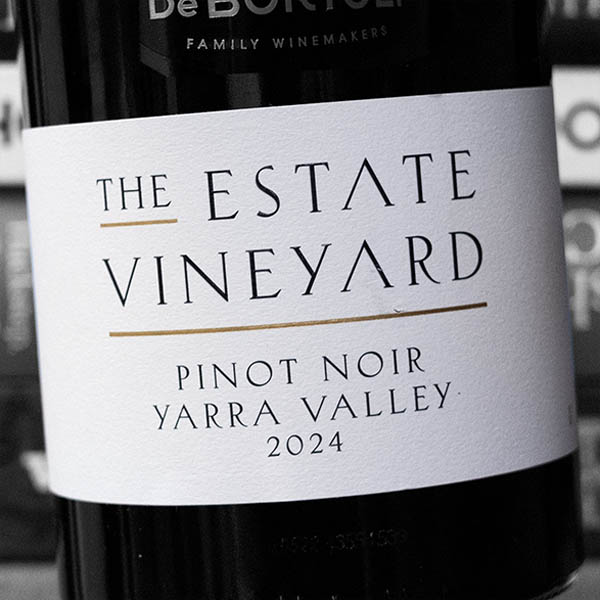
De Bortoli The Estate Vineyard Pinot Noir 2024 (Yarra Valley, Vic)
Has poached quince—flesh and skin—plus a touch of complexing wet dog pong (no, more ovine fleece than canine fur) and herbal, tincture amaro things. Fraises, almond sour cherry, sumac. Attacks with poached pear on the tongue and then builds some brandied black cherry; there's juice and a dried sour cherry coffee bean mouth-aroma, and—importantly—proper black grape tannin interleaving. There’s a density in the last third which pops up and surprises—a sort of squished caneberry thing—and this extends the palate pleasure. Has width as well—which is always a positive thing—along with real character. 93(94)/100 (e) - 9/10 (h) - 😋😋 - $24.95 cellar direct.
It’s such a lovely thing to see the youngsters coming through and following in the fine traditions of their families. If you click through the link above (or here) you’ll notice that the winemaker credit is specified as Kate Webber, Leanne de Bortoli and Steve Webber’s eldest daughter. Working alongside her is Jai Harrop the son of Tamara Grischy and Matt Harrop.
A little over a month ago I was wandering around the De Bortoli cellar tasting wine that they responsible for bringing into being. Which makes me feel both old and youthful at once. and thankful that I’m still being offered to participate in this insightful form of tastings, where one gets to see wines vinified by vineyard—plot by plot even—and from different fermentation and maturation vessels. , . taste delight still so much love tasting this stuff, and find new things to talk about. To write about people carrying on a tradition of care. Care is an importnat thing in the cultivation of the vine and translating its produce into wine. And respecting what has gone before and been.
A big shout out also to to Rob McDonald whose closer to my age and responsible for overseeing De Bortoli’s 200 hectares of Yarra Valley vineyards. It’s the growing of the grapes as much as the making of the wine. You’re fortunate that people take such care. I do, and that I’m still provided with the opporunity and the trust to taste what they’ve created.
Wine of Note 25/08-02

Terre à Terre Crayères Vineyard Reserve Fumé Blanc 2023 (Wrattonbully, SA)
A beautiful tangerine bergamot thing to begin with. Super-pure. Limpid jelly panna cotta wobble. Then elderflower and grapefruit peel appear. And real gooseberry. Super deep, super pure; incredible fruit intensity. Aromatic Vietnamese mint salad herbal leafy wafts as it sits. Attacks deep and pure too, with a compressed, stone fruit juiciness—but it’s also tongue-coating—tongue-enveloping—as it travels across the palate. Fabulous chew too; intense and mouth-sucking. Whopping fruit power on display here. (If I haven't intimated this enough already). Fine peach skin chew at the back also, becoming more recognisably Sauvignon Blanc — aromatically — with an hour’s air. This is a blast! A superb medium into full-bodied white wine in—or on—any tongue. Although if you’re seeking further complex developments, this will also age impeccably I suspect*. 96(97)/100 (e) - 10/10 (h) - 😋😋😋 - $59 cellar direct.
*This observation is founded on more than a suspicion, as I was fortunate to taste the 2012 Terre a Terre Sauvignon just two years ago. It still possessed tangy tangerine peel, but had developed subtle toastiness and a gorgeous macadamia nut creaminess. There was a transitory whiff of match-strike, a sniff of Ossau-Iraty rind. After ten years in bottle—under screwcap—it was still charged with fruit energy.
When I took it around to pour to some would-be interested individuals across a few Adelaide hospitality venues, it’s fair to say that it blew all away. None identified it immediately as a Sauvignon Blanc, just as a seriously beautiful, medium-bodied white wine. To a person they were close to flabbergasted when they learned of its age. So I’ve reason to believe that the ’23 Reserve Fumé will benefit from further time in bottle: hence my ‘if you’re seeking further complex developments’ comment. I would much enjoy revisiting this wine in another five years.
So, for that matter, would I much like to see the sublime 2021 and 2019 Terre a Terre Sauvignon Blancs with a few more years in bottle, the latter being off-the-charts amazing and the one previous vintage that I’ve tasted upon release which most closely resembles—fruit intensity-wise—this innagural Terre à Terre 2023 Fumé Reserve. The ’22 was darned good too, the ’23 slightly less so, and now tasting this release I wonder if this is maybe because of the reserve selection component being set aside, which at 1050 six-packs would represent about 20% of the usual bottling.
But neither were quite at the same detailed, luminous level as the ’21 and ’19. Which, like this ’23 Fumé and the ’22 bottling for that matter, are examples of scintillating medium to full-bodied white wine brilliance foremost, with the grapes acting as prisms for the expression of place. Ahead of any varietal designation, I mean. Much like Gembrook Hill’s Sauvignons in the most expressive vintages. Or great examples of Semillon Sauvignon blends of the left bank Bordeaux Blanc kind.
There is a 2015 Terre à Terre Crayères Vineyard Sauvignon Blanc museum release available at winery’s website shop, although I can make no personal observation about it as I don’t have any tasting notes for it upon release.

Soumah Single Vineyard Equilibrio Viognier 2023 (Yarra Valley, Vic)
Opens early—chilled—with considerable complexity this. Semi-dehydrated, bitter orange peel; warm, yellow peachy flesh attached to the kernel. Some cashew things and white sweetcorn silk. (Has a Roussanne/Viognier glow*.) But also just the right amount of cucumber peel, bitter skin cut. With more air and warmth there’s a grachai rhizome character (what what the genius chef-writer, David Thompson, describes as wild ginger). Some pineapple cube too. Has yellow—peachy, apricot fuzzy—fruit feeling flavours on the palate too, with phenolic chew, and just the right amount of textural slinkiness. Fab width here. An integrated mouth-aroma dab of excellent sourdough crusty oak too. There’s fabulous succulence for the first two thirds, but—maybe I am being hyper-critical?—it pulls up a bit in the last. Great width though, and so, so, super-stylish. 94(95)/100 (e) - 10/10 (h) - 😋😋😋 - $92 cellar direct. Actually let’s make this a 95/100 straight up, as I’d certainly push it forward at a wine show.
This last point I make as it’s important at an Australian wine show to confer gold medal-equivalent points to a wine the judge feels is a), special, and/or b), one that might somehow be overlooked. Were I to be have been onoe of the judges at the Yarra Valley Wine Show, for instance, which happened to be taking place the same week as I was assessing my line-up of exotic white wines in which the above was included, I would have ‘golded’ it to make sure it was brought to everyone’s attention. And accordingly I would have presented the arguments of my tasting note above about the wine's merits and why it should be so awarded. Since I’ve never been asked to judge this show this is, of course, conjectural. It will be intresting to see what score and medal was awarded to this delicious wine, if indeed it was even entered. Now I am even more sure about this wine’s quality having watched it evolve over a few days, which understandably cannot be done at a wine show. So for the record I’m now giving it a definite 95/100. And I would have voted for it at trophy time.
The crazy-detailed Soumah labels which itemise, among other things, harvest date, oak format, pH, TA, yeast (wild apparently), also specifies the Viognier clone as HTK, 1968. My database has these listed as two separate clones, the former being a heat-treated version of the virussed latter, so I’ll investigate further. And in now doing so I’m told both clones are planted: with the former at a closely-planted 9000 vines per hectare, and the 1968 on a more conventional Australian vineyard spacing. What’s omitted on the label though is the vine age, but as the first release of Viognier from the estate was in 2010 we can assume they went in the early to mid-2000s before more recently imported clones of Viognier were released through the Yalumba nursery.
There really is a treasure trove of Viognier planting material available from Yalumba, with material sourced from Condrieu, Côte-Rôtie and the Ardèche in France, as well as California. The nursery’s website lists the Californian sources as Jade Mountain and Tablas Creek (ex-Beaucastel apparently), and although no sources for the French material is indicated I have notes that say the source material was obtained from Guigal and Yves Cuilleron. Both 1968 clones are still available and Yalumba’s team speak most highly of the virussed example especially.
*The glow I’m talking about here is that just-picked sweetcorn lustre which you can smell on your hands when you remove the husk and and silky strands. You can see the smell of fresh picked corn I reckon, and Roussanne and Viognier, can both have this aromatic when—like corn—it is picked just right. This wine I had in the same half-blind line-up as the Terre a Terre Fumé reviewed here also. Plus a few more exotic Chardonnays with a Mendoza/Gin Gin clone influence.
As a matter of practice, I also have what I call a rinse blend in my line-up, just for the fun of it. As well as a little sensory challenge. Which means that I rinse each glass with the same wine being poured to sample, and I then combine all the rinses in a jug which I then return to a final glass (I then randomise all the tasting glasses).
The rinse blend in my line-up I gave 91/100 and made the following observations among others: A touch more golden...Has some glow…A touch of cream...Apricot fuzz..Some durian-like grubbiness (in a good way). So the Soumah Viognier showed its presence pretty strongly I reckon.
Wine of Note 25/08-01

Roberts & McNally Lo Stesso Fiano 2024 (Heathcote, Vic)
Has both a tight, vital, smashed iced oyster shell primal thing, and then a fruitier—nourishing, encouraging—sourdough starter sweet fruit character blooming too. Gets sheep’s milk blue vein and transitory white pepper. Celery salt. Smells a bit bubbly base Blanc de Blancs-like. So: white blackberry baked apple. And tastes likewise, which is not quite what I was expecting, but so welcome. Baked, peel-stuffed, apple blackberry plumpness, which makes it—well—taste cuddly. Edgy peel dried grapefruit too, among phenolic chew and mouth-sucking acid density. Generous fruit-wise and such a fun surprise. We need more white wines like this. There’s complexity too, although it’s not a requirement that you study too hard to find it. 94/100 (e) - 9/10 (h) - 😋😋😋 - $33 cellar direct. Although the link here is to the website it is now listed as out-of-stock. But it is still available via distributors and will presumably—see below—also be on the list at Chauncy in Heathcote, should you happen to be visiting this rather special regional restaurant.
Many good things remain stuck in my head following a revelatory visit to Heathcote in October 2022. My first experience of the 2022 Lo Stesso is one; enjoyed along with many other remarkable wines, over a memorable lunch at Chauncy with local winegrowers. If you’re inclined, there’s a big read of the detail of my visit to Heathcote which can be found here. My piece was originally published in WBM, which does an formidable job of ensuring that meaningful, long-form stories about wine in Australia make it into print.
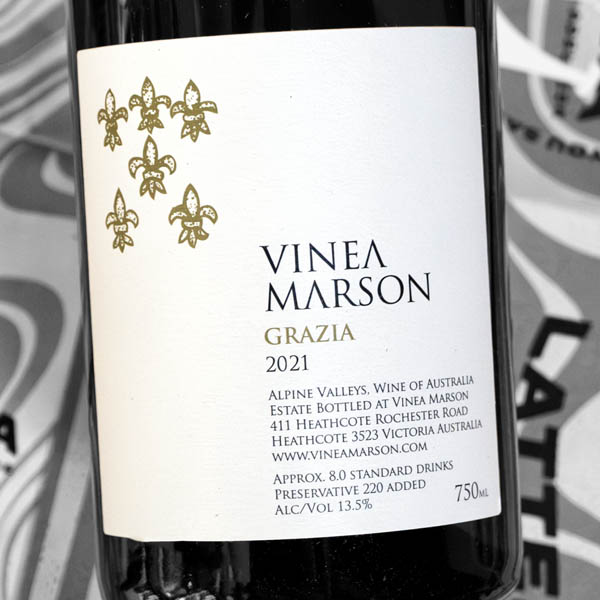
Vinea Marson Grazia 2021 (Alpine Valleys, Vic)
Fabulous, tight peel here: rosemary resin, tangerine, ruby grapefruit rind. And an oak rye crustiness among cracked, icy river stone pong. Has plenty of dried zest and grip on the palate—mouth-sucking—with pink salt, and wide, white nectarine fuzz and kernel as it lengthens. Serious extract also. And there’s something a bit faded rose Turkish Delight to close too—in a really appealing way. This is serious white wine. 95/100 (e) - 9/10 (h) - 😋😋😋 - $34 cellar direct. Were this wine to come from Friuli, rather than being Friulanan inspirationally, it would cost you twice—if not triple—the price. This wine is a barrel matured blend of Friulano, Malvasia d'Istria, Picolit and Pinot Bianco from a truly singular—in Australia at least—single vineyard in Porenpunkah, Victoria.
After the rather long lunch Chauncy I reconvened with Emily McNally at Jasper Hill to taste a few things from barrel, including a rather special Nebbiolo which I later got to taste in a little blind line-up, once it had made its way safely to bottle. Emily had departed Chauncy a little early to recover a tractor which had got bogged in the vineyard. The winter and spring of ’22 had seen significant rainfall and flooding in the region as is covered in some some detail in the piece I wrote for WBM.
After concluding my visit to Japser Hill I travelled a little further northwards to visit Mario Marson and daughter Madeleine at Vinea Marson. We went for stomp—or rather a squelch—around the vineyard, and it was like walking on a deep-pile, green carpet floating atop a giant puddle. A boggy afternoon indeed.
It was after that we tasted and tasted Grazia for the first time, from both wood and bottle.
Wine of Note 25/07-02
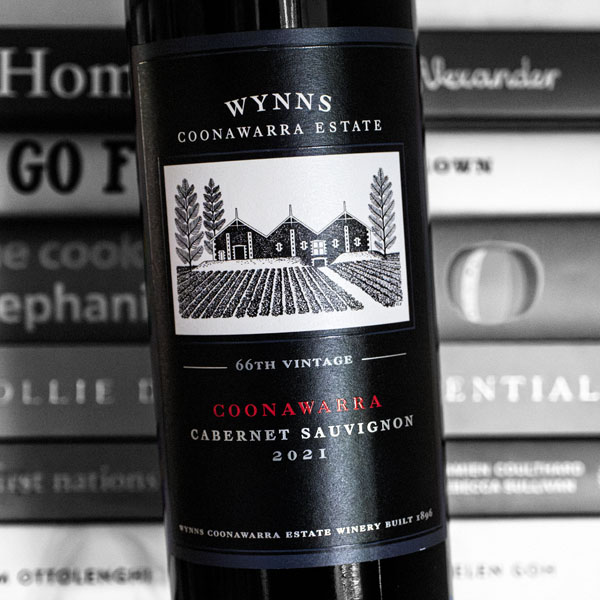
Wynns Coonawarra Estate Cabernet Sauvignon 2021 (Coonawarra, SA)
Glistening and sparkly this: there’s both candied peel plum pudding fruit, and interleaving more juicy, pippy forest berries. Gets deeper and more broody as it sits; serious depth here as it builds gradually in the glass. So there’s an impression of density and brightness. Cedariness too, flake tobacco, some liquorice—adored cabernet sauvignon characteristics all. Tastes pretty oomphy—fruit depth and intensity—but with that mouthwatering edge. Melting, comfy, smooth, fine-grained tannins. Lots of juice and mixed peel and dried/saturated, blue/black fruits in here. Not super-edgy or bracing in the tannin finish department—which I anticipated it to be from the nose—but beautifully balanced and cuddly in a most good way. 94(95)/100 (e) - 8/10 (h) - 😋😋 - $45 cellar direct, even though the current vintage has rolled to 2023 this past ‘Wynnsday'. It’s also available for $34.99 from Hurley Cellars, Frewville. Will evolve for at least twenty years and live for so much longer. But it can—and should—be enjoyed now. Just give it a slop around in an accommodating vessel and allow it to gather some air.
A few Sundays ago Lorenzo Vezzosi, wine consigliere at Latteria (Hutt St, Adelaide), placed an unannounced white in front me, although I did hear the delightful—reassuring—sound of a screwcap cracking. Its smell had me a bit perplexed. Primal, not immediately or distinctively or distractingly varietal, and even a little grubby smelling. Although, as I took a little sip of it, there was nothing untoward on the palate.
But before I got around to assessing it further, a chance conversation ensued with a winemaker acquaintance I’d not encountered in a long time. (It wasn’t that with Grant Nash’s Bryn Richards mentioned below).
Ten minutes or so later, when I did get to tasting the wine, it had opened up considerably (as can thankfully happen). It had become more papaya perfumed, while the palate was both chewy and tangy. It had stylistic properties that recalled a wine Lorenzo had poured me shortly after Latteria opened in April last year, Vinea Marson’s divine 2019 Grazia from Porepunkah. And I said so.
Which was an interesting observation as the wine turned out to be an ELM 2023 Bomba Bianco, a blend of Pinot Bianco, Malvasia Istriana and Friulano. From Porepunkah in the Alpine Valleys of Victoria. Named for the sisters Emily, Laura and Madeleine Marson, daughters of Helen and Mario, founders of Vinea Marson in Heathcote. Madeleine shares oenological and wingrowing duties with her dad.
So what’s this got to do with Wynns Cabernet Sauvignon? Well, another wine Lorenzo showed me that afternoon was the 2023 Mayer Bloody Hill Coldstream Cabernet Sauvignon. It was not poured blind, but he knows that I enjoy this considerably out of fashion cultivar as much as he. It’s crisp, juicy leafy, and a bit Cabernet Franc-like in its cane-berry fruit characters. Lots of fun.
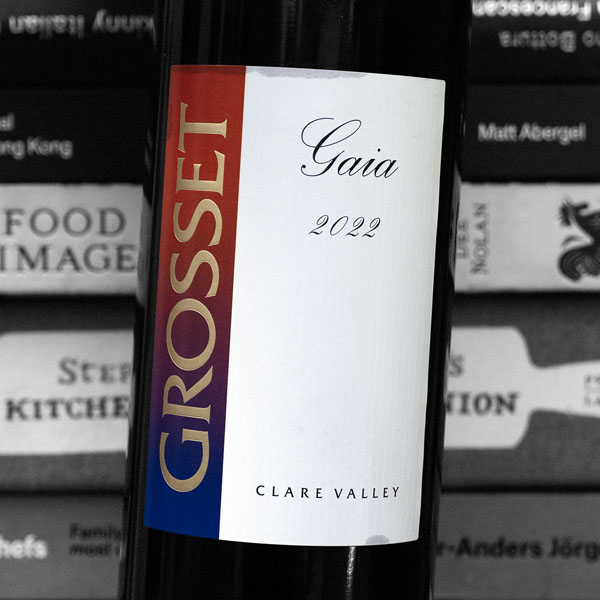
Grosset Gaia 2022 (Clare Valley, SA)
Smells most lovely this (so it’s already getting a high hedonic hit from me 😃). Smacks of cane berry juiciness and hot brick dryness. There’s gentle woodsiness of the deciduous kind, a sniff of anise, soused black cherries. Then a waft of assam. Intense and mouth-watering—sour cherry soused cherry—fruit on the palate. Melty, carbon paper tannins which run long, as does the intense sour cherry, dried peel, juicy blackcurrant and loganberry pippiness. Fruit and tannin pitched on exactly the same length. Mouth aroma wafts of wagyu bresaola and havana cigar leaf. A transitory bergamot rind character too and some faded blue vein crumble. This is most sublime. Even more so on day two. 96(97)/100 (e) - 10/10 (h) - 😋😋😋 - $108 cellar direct. The Gaia has now rolled to ’23 on the winery website—which is also a fabulous wine by the way—but there is still some of this out there in retail land. Grosset does still offer magnums of the ’22 directly for $236.
Perhaps I was channeling fond menories of Gaja’s Darmagi when I happned upon that Wynns Black Label. Certainly in Grosset’s ’22 Gaia there’s more than a touch of nebb-ishness. Which I attribute to the decent dollop of Cabernet Franc it contains. As I’ve written previously I’ll often taste straight Cabernet Franc and Nebbiolo in the same bracket, as I think the aromatic and structural fits are appropriate.
Wine of Note 25/07-01
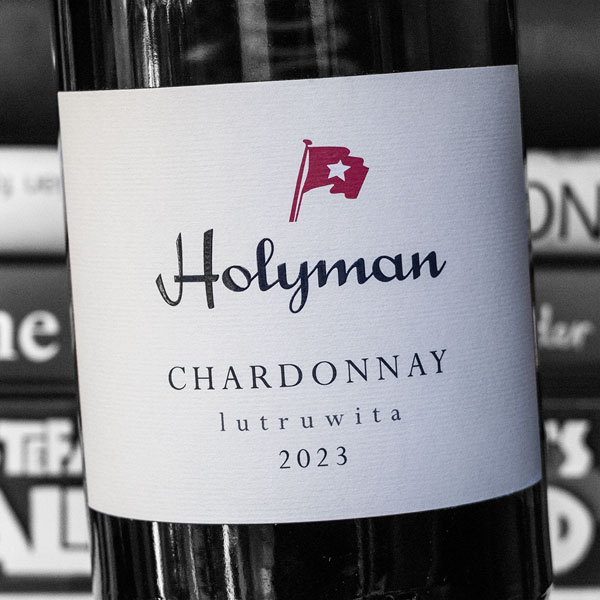
Holyman Chardonnay 2023 (Tamar Valley, lutruwita — a.k.a. Tasmania)
Oyster, iced nectarine kernel. Fine, subtle matchstrike also. Something iced bisque crustacean smelling about it; a touch of slightly resinous herb—rosemary—as it opens up. This smells absolutely lovely. Bracing ozone, marron juices and fab complexity. Not quite as oomphy as I was anticipating in the mouth, although it lingers long, and evolves in an understated and classy, controlled way across the palate. Pale yellow peel and iced dusted white nectarine. Subtle flint mouth-aromas. So many delicious things to suck on here. And it will grow over the next five years. 95(96)/100 (e) - 10/10 (h) - 😋😋😋 - $60 cellar direct. This is no longer available for purchase at Stoney Rise on-line store, but if you take a visit to the cellar door there are a few bottles available.
Lorem ipsum dolor sit amet, consectetuer adipiscing elit. Aenean commodo ligula eget dolor. Aenean massa. Cum sociis natoque penatibus et magnis dis parturient montes, nascetur ridiculus mus. Donec quam felis, ultricies nec, pellentesque eu, pretium quis, sem. Nulla consequat massa quis enim.
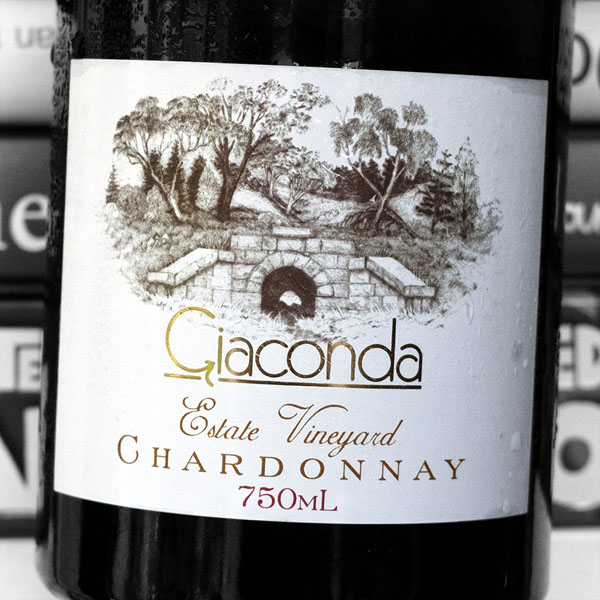
Giaconda Chardonnay 2023 (Beechworth, Vic)
Fruit mince pie filling, complex kumquatty candied peel. Sourdough crustiness among compressed baby pines (some Mendoza or P58 in here?). Swan Vesta match-strike*, although not over-the-top. This smells serious, and seriously good. And the fruit just grows and grows as it warms and opens. Dehydrated pine and peach skin. Dried fig too. Lands on the tongue with intense fruit tightness—so intense—with powerful textural artefact and fruit density. Flintiness and sourdough crustiness adding mouth-aroma complexity also, but not at the expense of—or above—the concentrated fruit. So much going on in here. Deep, compressed stone fruit: both the flesh and iced, crushed kernel. Lime thyme peel among the mouth aromas that linger. As you may gather this an off the charts—beautifully flavourful—complex, multi-dimensional chardonnay. Right up there with the 2019, which is a great chardonnay of any provenance. And this is how it tastes now: so it will be sublime to revisit again in a few more years. 97(99)/100 (e) - 10/10 (h) - 😋😋😋 - $150 cellar direct. Needless to say the Giaconda online offer has long been and gone, but this will be on lauded wine lists and maybe on a few retailers shelves around the country. And certainly available at auctioneers such as Langton’s when the cellar sellers’ believe the price is right. The 2022 is already on the website at $300.
Lorem ipsum dolor sit amet, consectetuer adipiscing elit. Aenean commodo ligula eget dolor. Aenean massa. Cum sociis natoque penatibus et magnis dis parturient montes, nascetur ridiculus mus. Donec quam felis, ultricies nec, pellentesque eu, pretium quis, sem. Nulla consequat massa quis enim.
Wine of Note 25/06-03

Wickhams Road Chardonnay 2024 (Yarra Valley, Vic)
Classic Hoddles Creek iced pebbles and ground, iced fennel seed dust. Crab apple and a touch of baby pines too. (By which I mean sharp, sweet, mouthwatering Thai baby pineapples, not pineole scented tiny pine trees). Cucumber rocket too. With air and warmth it gets plumper and fleshier. Has white compressed nectarine on the palate too, and sweet-sharp baby pineapple aplenty again, with toothsome chew and extract. This is seriously good in the mouth. Has great texture and a quartziness. Compressed Cox's apple and white peach skin lingers. So darn good. 91(92)/100 (e) - 8/10 (h) - 😋😋 - $19.99 cellar direct. And then at the reveal you learn it’s $20! What a bargain.
The sticker attached to this tasting sample of this wine read: ‘Last year of Chardonnay from Lonestar vineyard as it’s been sold. Next year is a new challenge.’
A phone call to Franco d’Anna, whose number is also always on the stickers he attaches to media samples, yielded a bit more information as to whether there was any Mendoza or P58 chardonnay at Lone Star (the question prompted by my observation of the baby pine character in the review above).
And it turns out to be clone P58. Lone Star is a few kilometres to the west of Hoddles Creek Estate's Syberia vineyard. If you click this link tagging Syberia and then turn on the Google Maps satellite layer, you’ll see where I’m talking about.

Wickhams Road Pinot Noir 2024 (Yarra Valley, Vic)
This smells gently terra cotta dusty and builds, blackcurrant and raspberry leaf. So pretty cane berries and red brick dust. Some bay leaf cineole too, although a component not a feature. Gentle on the tongue, with raspberry pippiness and then that dry dusty terra cotta character materialising in a tannin sense too—mingled with light mocha. While not exactly long lasting on the palate, it has width and the tannins break well with a dab of bitters at the close. All components seamlessly mingle, so it’s delightfully balanced in flavour, acid, tannin. There's a bursting ‘fool-like'* pippiness to the fruit. Some crusty spelt pastry. This is fun. 91/100 (e) - 8/10 (h) - 😋😋 - $19.99 cellar direct. You’d be hard pushed to find another ‘real’ pinot at this price I reckon. By real pinot I mean one which actually tastes like a red wine with genuine, deliciously extracted tannin.
For a backstory about the info stickers that Franco d’Anna attacthes to Hoddles Creek tasting samples click here. Contuining d’Anna’s history of concision and understatement this one read: ’90% from Hoddles which is something we've been aiming for. Just gives us more control.’
Specifically the estate portion of this pinot is from the new plantings that d’Anna has established across three seperate blocks to the South-East of the original estate vineyard, which is located behind the winery. You’ll find them tagged here.
*I’m returning back far to my childhood in the country of my birth with this reference. You’ll find a recipe for proper raspberry fool here, but the ones I’m thinking of were these little pre-made, foil-sealed pots which were packed with this mousse-textured, cream and raspberry treat, which were simaultaneously intense, refreshing, and sweet-sharp.
Unless otherwise indicated all wines reviewed on MY site have been assessed in half-blind, peer-group line-ups. You’ll observe that I publish two ratings for each wine reviewed. The score out of 100 (e) is my ‘empiric’ evaluation, based on the palate memory filing cabinet I’ve accumulated having tasted many thousands of wines over a few decades. The second score out of 10 is my ‘hedonic’ (h) score, which is much more personal, and indicates how much I ‘like’ a wine. I believe that the two marking propositions provide a more nuanced approach to ‘rating’ wine. You’ll find detail about the distinction of my hedonic x empiric evaluations here. Any emojis I append should be self-explanatory. 😀
Wine of Note 25/06-02

Grant Nash Grenache 2023 (McLaren Vale, SA)
This smells like a bit of fun. Has plum skin and then rosehip pomegranate, gentle old white pepper. Autumn gold plum. A transitory sniff of galangal. Gentle in the mouth and with more of the rosehippy thing going, plus dried peel, a succulent plum skin and pomegranate core, and fine sandy Grenache tannins. Delightful dustiness and some alcohol warmth which sits perfectly with the weight of the fruit. Mouth-sucking and flinty, evolving wetter, carbon paper tannins with air. Valedictory mouth-aroma wafts of jerky too—of the beef kind. This is a most tasty medium to full-bodied grenache, with just the right mix of seriousness and ebullience. 93(94)/100 (e) - 8/10 (h) - 😋😋 - $40 cellar direct.
Now I’ve met Bryn Richards on a number of occasions over the years. But I didn’t get to see tasting samples of the Grant Nash trio until after a chance encounter with Bryn on the pavement outside Latteria (on Hutt St, Adelaide). Long simmered stock.

S. C. Pannell Little Branch Grenache 2022 (McLaren Vale, SA)
This smells sharp. Sharp in a piercing, intense fruit sense. And sharp, as in smart and stylish. There’s autumn gold plum skin fruit and brick dust, becoming more wet terra cotta as it opens. Then plum pudding, carbon paper, bramble. A quartzy, pomegranate shimmer too. Fruit which smells like it’s grown in red, rocky earth. Then, on the palate—in the mouth—it’s bitter orange rind tense, getting crystalised peel and other fruit mince pie filling semi-dried flavoured things as it opens up. But it’s the pure—incredibly long—tannin textures that spellbind as much as fruit flavour and intensity. They’re fine, dense and super-dry, and yet sparkle with the load of fruit carried within. So: the fruit energy lingers and doesn’t dry; the tannins build while still soused in the fruit. Melty rosehip running long across the tongue, and then mouth-aroma wafts of crumbled red rock and just moist jamon Iberico. This tastes pretty special. 97(98)/100 (e) - 10/10 (h) - 😋😋😋 - $85 cellar direct.
You might be thinking that my crazy high score for this wine is perhaps influenced by my aforementioned close relationship with Steve Pannell. Well no it isn’t, for as is my usual process the wine was assessed in a small half-blind line-up with other Aussie grenaches of some reputation, all from 2022. I know I labour this point, but it’s the way I work and not many others writing and reviewing do so. Which is not meant to sound sanctimonious, and by now I’m beyond caring about laboring this point, as most wine reviewers in Australia are beyound caring about rigorous assessment and criticism.
Incidentally, run away if you’re one of those who expects McLaren Vale grenache to taste like gently spicy, thin, acidic, raspberry cordial.
Wine of Note 25/06-01
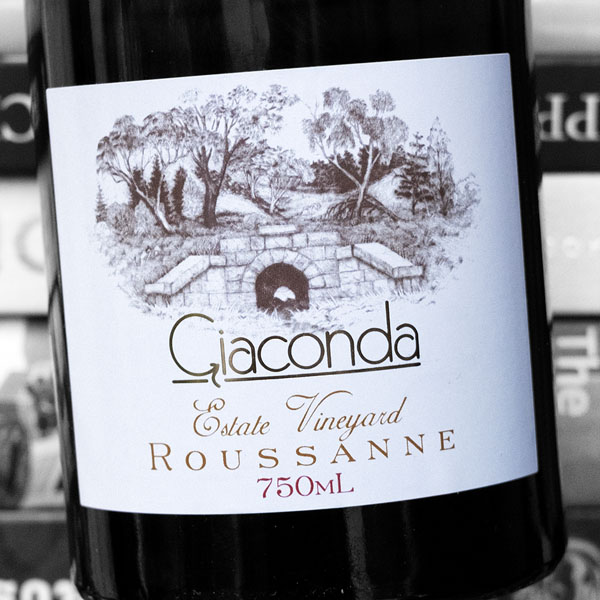
Giaconda Estate Vineyard Roussanne 2023 (Beechworth, Vic)
Smells like Roussanne straw, and peel. Plus gentle match strike and creamy lees. Chawanmushi crème brûlée if possible. Just picked sweetcorn. Sweetcorn chewanmushi. Something a bit Turkish Delight like too. The preserved lemon. Curry leaf. Fig skin. Complex crusty oak swagger..This is sexy sumptuous, and has that cracked brulee chewan thing, a custard quality. Not super-complex though. Nor super-long. Indeed drops a bit at the back, and gets struck pistachio. Some Turkish Delight also, the finish kind of drifts in and out. Non-linear. Warth of the crème brûlée..How is this going to open?.
95(95)/100 (e) - 9/10 (h) - $85.
In the middle of the COVID lockdown in 2020. Interesting that I’d observe Provenance, Beechworth, althugh I new there was a wine from Beechworth in the line-up.
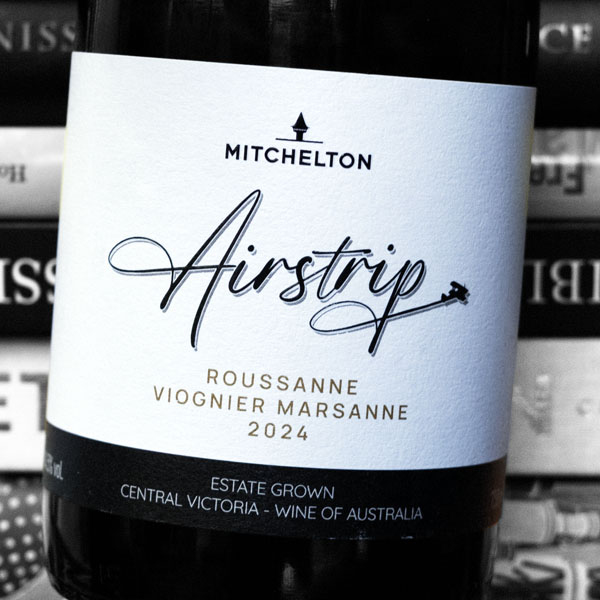
Mitchelton Airstrip Roussanne Viognier Marsanne 2024 (Central Victoria, Vic)
Has a lustrous, glacé straw glow—if you can conjure up such a thing—and then builds lush, deep apricot. The former derived from roussanne methinks, the latter emphatically viognier. Glacé corella pear too and smells more intensely stone fruited as it sits, but not overwhelmingly so. There’s chamomile and transitory just-mown grass adding cut. Pure, chilled panna cotta wobbly with an oaty biscuit base. This promises to be a fun ride. Super-pure viognier expression, in a gently dehydrated—poached and gently caramelised— apricot way, and then super-slinky textured across the tongue, yet also vital and brisk, with mouth-aroma wafts 0f patined, sapid oak crustiness. In short: this tastes bloody gorgeous—what a palate! Will grow too I reckon, in the short term at least. 95(96)/100 (e) - 10/10 (h) - 😋😋😋 - $35 cellar direct. This is one you drink. Old school in the best kind of way.
This reminds me—and I’ve got on enough in years, to say this—of the old days. That period after Australian winemakers got over an unhealthy obsession with new, small format oak; but before there developed (a still prevailling) preoccupation with harevsting grapes, before flavour development—and complexity—that we (can) do so well.
The wines reviewed on this site have been rigorously assessed in half-blind, peer-group line-ups, unless otherwise indicated. They are appended with both an empiric (e) and hedonic (h) rating. As well as an emoji rating for good measure 😀. For explanatory detail about my tasting process and scoring system please click here.